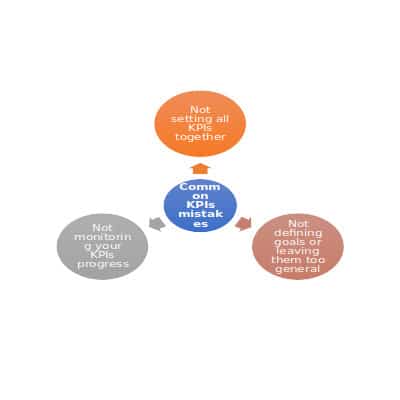On-line training for women e-entrepreneurs
-
Module 1 What is entrepreneurship8 Topics|1 Quiz
-
1.1. Introduction to entrepreneurship
-
1.2. Basic principles of entrepreneurship
-
1.3. Types of entrepreneurship
-
1.4. Differences between entrepreneurship and e-entrepreneurship
-
1.5. Entrepreneurial thinking
-
1.6. Entrepreneurial skills
-
1.7. Challenges and opportunities women face in entrepreneurship
-
1.8. Ethical aspects in entrepreneurship
-
1.1. Introduction to entrepreneurship
-
Module 2 From idea to business7 Topics|1 Quiz
-
Module 3 Digital Marketing10 Topics|1 Quiz
-
3.1 Marketing research and marketing plan
-
3.2 Digital Marketing
-
3.3 S.E.O. (Search Engine Optimization)
-
3.4 Social media marketing
-
3.5 PPC – Google AdWords
-
3.6 Web Analytics
-
3.7 Mail Marketing
-
3.8 Internet of Everything
-
3.9 How to build your website
-
3.10 Effectiveness of a digital marketing strategy
-
3.1 Marketing research and marketing plan
-
Module 4 Business Networking6 Topics|1 Quiz
-
Module 5 Fund-raising & financing6 Topics
-
Module 6 Presentation of an e-entrepreneurial project (pitch)3 Topics|1 Quiz
-
Annex
3.10 Effectiveness of a digital marketing strategy
On the previous topics, you learnt about what digital marketing is and what are the most common and effective methods of digital marketing. So, once you learn these, you also have to learn how to measure the effectiveness of your digital marketing efforts. The metrics of measuring the effectiveness of your digital marketing strategy will help you create brand awareness and increase your sales.
Digital marketing is the most powerful and measurable form of marketing and the most cost-effective way to market your business. The biggest benefit of digital marketing is that allows you target your potential customers. Marketing effectiveness is when someone measures how the marketing strategy meets the goals of the enterprise. If your digital marketing strategy is not effective, it will be harmful for your business.
An effective digital marketing strategy depends on how well you connect with your target customers. Measuring your marketing strategy helps you understand what is working and what is not with them. It allows you to identify more information about your customers regarding their preferences and improve your strategies accordingly in order to have a greater impact. By measuring your campaigns, you know which campaigns perform well and you must invest more on them and which are not working well and you should stop them.
Steps for measuring the effectiveness of your digital marketing strategy:

Set your business goals and involve your company’s personnel on those efforts, in order to have all the same aims.
Set your targets for every goal. Your targets must be realistic and achievable.
Target the audience you want to reach through your campaigns. Your audience can be either people or organizations.
Establish the key performance indicators early and set specific targets for each one of them.
Choose and use a good analytic platform for monitoring and measuring your marketing strategy.
Key Performance Indicators are those metrics that help you to monitor and measure the success of the failure of your digital marketing strategy. KPIs indicate to you what is working and what is not in your marketing efforts. You must dedicate time to understand your marketing KPIs and know how you can better develop your marketing strategies, in order to success. Not tracking your marketing KPIs means wasting of time, money and efforts. The information you need for this process is the data collected from the website. Some of the most essential KPIs for your enterprise are:
1. Return on Investment (ROI)
One of the most important measurement in your digital marketing campaign is the return on investment. ROI tells you if your marketing strategy is working or not. You know that your efforts are paying off when there is a correlation of new sales to online marketing efforts.
2. Overall Website Traffic
Driving traffic to your website is one of your primary aim of your strategy. Measuring your website’s traffic offers you an overview of the performance of your strategy and your efforts.
3. Traffic by Source
By measuring traffic by source, you can focus on low-performance campaigns and improve them. The main website traffic sources tracked by Google Analytics are organic search (the users who came to your website from a link on a search engine), direct visitors (the users who typed the URL of your website), referrals (the users who came to your website from another website) and social (the users who came to your website from your social media account).
4. New Visitors vs. Returning Visitors
An important metric for the success of your campaign is not only the number of the visitors, but also if they are new or returning visitors. This metric helps you to understand how your website’s content influence your visitors and what you have to do to improve it.
5. Sessions
Sessions is the number of the visits on a website. Tracking sessions give insight into how advertisements to the platforms used can attract new customers. It also gives you information about repeat customers and how the influence of your advertisements on your customers.
6. Average Session Duration
This indicator differs from the niche and functionality of a website. There are factors that affect the average session duration, such as the structure of the website, the quality of the content, etc.
7. Page Views
Page views is the number of times that people visited your website. It is the indicator that you need to understand if your website has the engagement you want.
8. Most Visited Pages
There is an indicator which shows you more interesting pages for your customers. This is helpful for you in order to improve the remaining pages.
9. Exit Rate
Exit rate shows where users were on the page before leaving the website.
10. Bounce Rate
Bounce rates are the visitors who come to your site to check something but they leave without exploring other areas on the website. A high number on bounce rate is a bad sign, as it means that visitors did not spend enough time to your website. A good bounce rate should be less than 40 percent.
11. Conversion Rate
The conversion rate is the number of visitors who completed a desired action. Conversion rates show you the performance of your marketing campaign and how effective it was. Except from the conversion rate of your websites, it is equally important to monitor and measure the conversion rates of other medias, such as social media, email marketing, etc.
12. Impressions
Impression is the number of views that your content receives. Your content may appear more than one time to the same person but each time is counted as an individual impression. The number of impressions is higher than the number of the reach, as reach is only triggered once per user.
13. Social Reach
Social reach tells you how effective your social media campaign is. This metric shows you how many people you reach with your social media posts, how many people saw your content.

14. Social Engagement
Social Engagement is also a metric for your social media posts. It measures the number of interactions (likes, comments, shares, retweets, etc.) that you gain to your posts. You can not pay for engagement, but only to earn it when people interact to your posts.
15. Email Open Rate
Email Open Rate concerns email marketing and measures the number of people who open your email campaign compared to the overall number of those who received it.
16. Click-Through Rate
One more metric for email marketing is the Click-Through Rate. Click-Through Rate is also used for paid advertisement and it is related with the pay-per-click and determine the relevance score and affects the Cost Per Click.
17. Cost Per Click
Cost Per Click is the amount you pay every time that a user clicks on your advertisement.
18. Cost Per Conversion
Cost Per Conversion is a must metric when you have an eCommerce website and tells you how much it costs to convert a site visitor into a sale. If you are not converting sales directly online, you ignore this metric.
19. Cost Per Acquisition
Cost Per Acquisition is relevant when you have returning customers and measures the aggregate cost to acquire one paying customer on a campaign.
As the online presence and digital efforts of a business nowadays are the most important part of a successful business, is crucial to work constantly on improving your company’s performance. Knowing how to measure the effectiveness of your digital marketing strategy helps you avoid wasting money to campaigns that did not working. Before you launch a campaign, you should know where you want to focus, what you want to achieve and how you are going to measure it.



